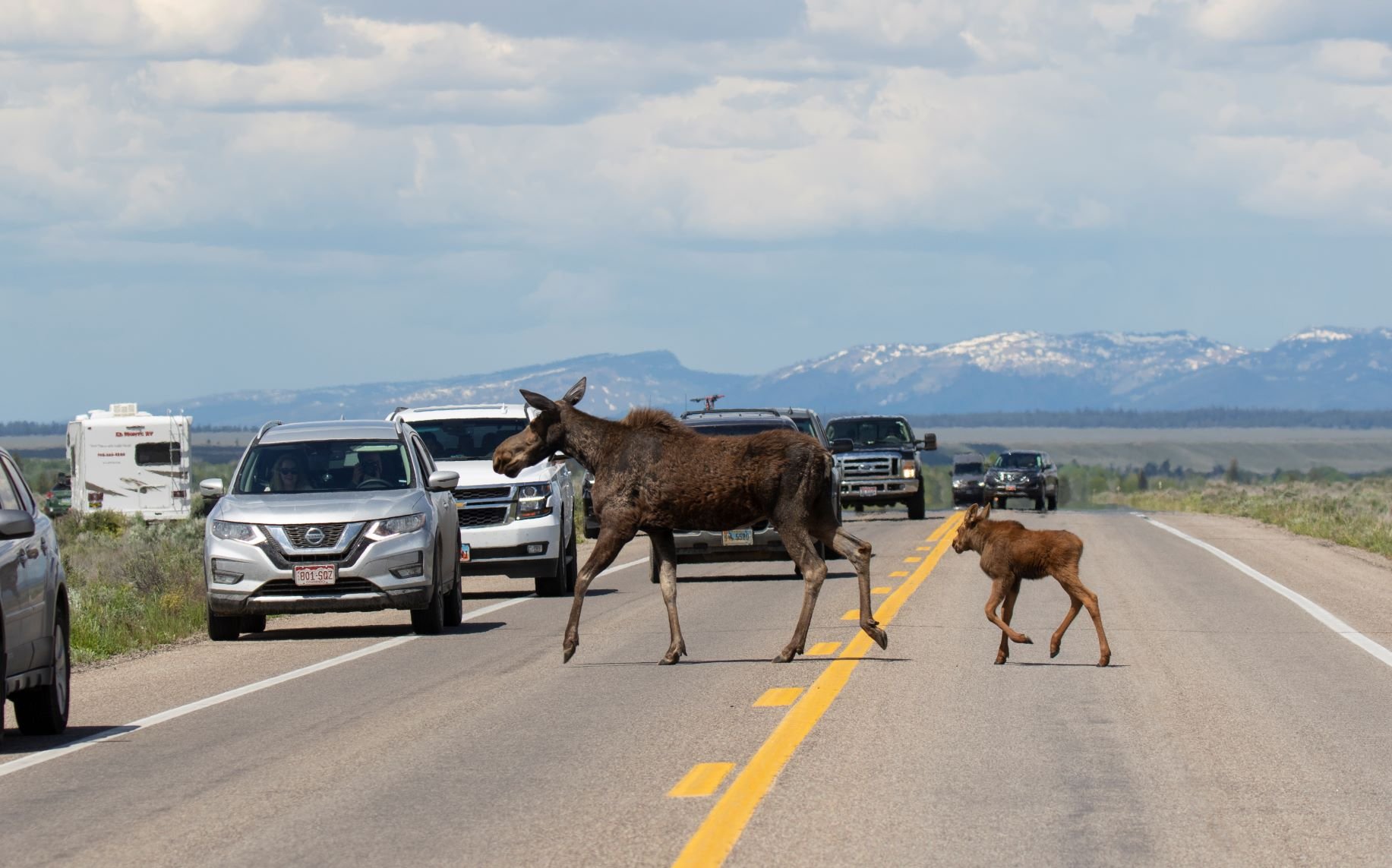Funding in place for four crossings in Teton County, Wyoming
The Teton County Commission voted this week to put $3 million of Special Purpose Excise Tax (SPET) funds toward two wildlife crossings near the Snake River on Highway 22 outside of Jackson, Wyoming. This project will benefit moose, elk, and a host of other species and help keep this riparian corridor permeable to wildlife and roadway safe for our families. GYC worked with our partners to run a successful campaign in 2019, raising $10 million for wildlife crossings in Teton County. The 2019 SPET ballot measure for wildlife crossings was overwhelmingly backed by our community, with nearly 80% voting in favor of wildlife crossings.
GYC has been actively involved in a Wyoming Department of Transportation (WYDOT) stakeholder advisory committee for the Highway 22 Snake River Bridge/390 Intersection construction project, slated for construction starting in 2023. WYDOT also assembled a wildlife advisory group for the project that has participation from Wyoming Game and Fish Department, local landowners, county staff, and conservation groups. These two groups made consensus recommendations on the location and specifications of structures that will maximize use of the crossings by wildlife.
The Teton County Wildlife Crossings Master Plan identified this location as the #1 priority in Teton County. Through this process, GYC has advocated for 4 priority crossing locations, with a focus primarily on designs to accommodate moose, and which will allow most other species to pass. WYDOT has committed funding to the two highest priority crossings at this site out of its own budget, with an estimated to cost of $3,421,000. Teton County, this week, signed an Agreement to Render Services with WYDOT to fund the two remaining crossings through SPET funds, estimated to cost approximately $3 million. This achieves all of the recommendations in the County’s wildlife crossings master plan in the area.
Highway projects like this require a lot of planning and coordination. Funding is only one element; there are also many issues that arise with safety, recreational access, easements, land-ownership, fencing, and engineering. Working with WYDOT and the community through these issues is critical to their success. By working together on the finer details of this project, we hope to achieve a world-class network of wildlife crossings while promoting safe pedestrian use, considering aesthetics and private property rights, all within one of the busiest highways in the state of Wyoming that needs to transport people in vehicles safely. Reducing wildlife-vehicle collisions, one of the greatest hazards in this corridor, by building wildlife crossings will make this road safer for families and wildlife.
Crossings at this location are important because they help maintain permeability for wildlife in this ecologically important riparian habitat along the Snake River. Habitat is vital winter range for moose and an important corridor for many other species. It is also a location with high wildlife-vehicle collision mortality, with an estimated fifty moose having been hit within a mile of this project area in just the last 10 years. Collisions with moose are especially dangerous and costly, averaging over $30,000 per collision, and are a far greater threat to human safety than collisions with smaller animals. Wildlife, along with natural and scenic resources, draw both residents and visitors to this special place and are at the core of our heritage, culture, and economy. Travel spending in Teton County generates $1.02 billion dollars annually for our local economy (WY Office of Tourism, 2016) and observing wildlife in Grand Teton National Park is the number one recreational activity of visitors (Williams et al, 2012). In addition, collisions with moose are of great concern locally because of the relative scarcity of moose and the fact that the Jackson moose population has been declining for years. The loss of even one moose in a vehicle collision may have a harmful effect on the local moose population. These crossings, along with wildlife funnel fencing that has been carefully planned for the area, can be anticipated to reduce wildlife-vehicle collisions by up to 80%.
This project demonstrates how Teton County can effectively work with WYDOT to address mutual interests in reducing wildlife-vehicle collisions, increase human safety, and fund these efforts. We thank the County Commissioners and the Wyoming Department of Transportation for supporting this important project.
-Chris Colligan, Wildlife Program Coordinator

